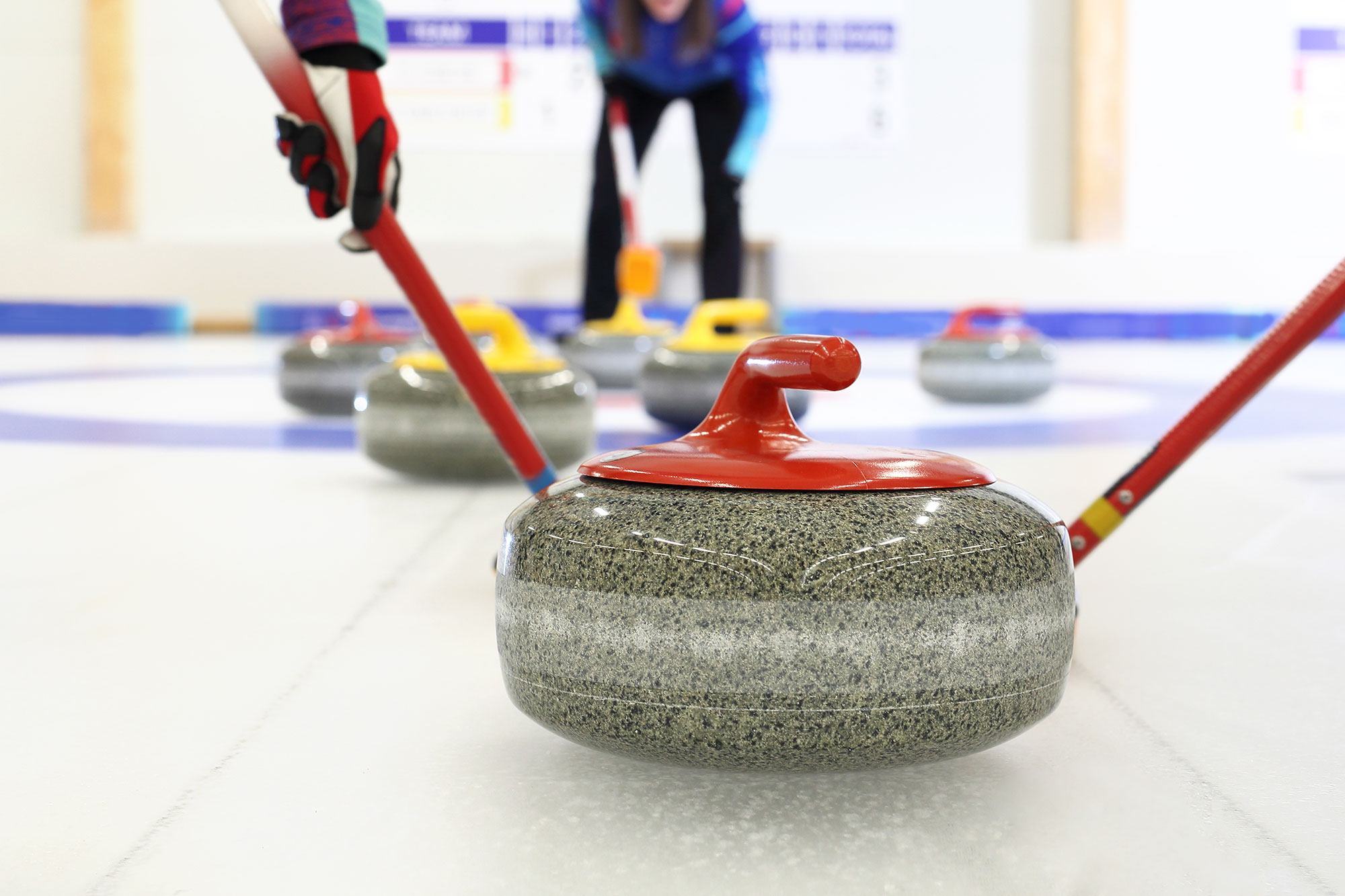Sports Tech@TDK
Figure skating Jumps -Dynamic jumps and spins in figure skating are the star of winter sports-
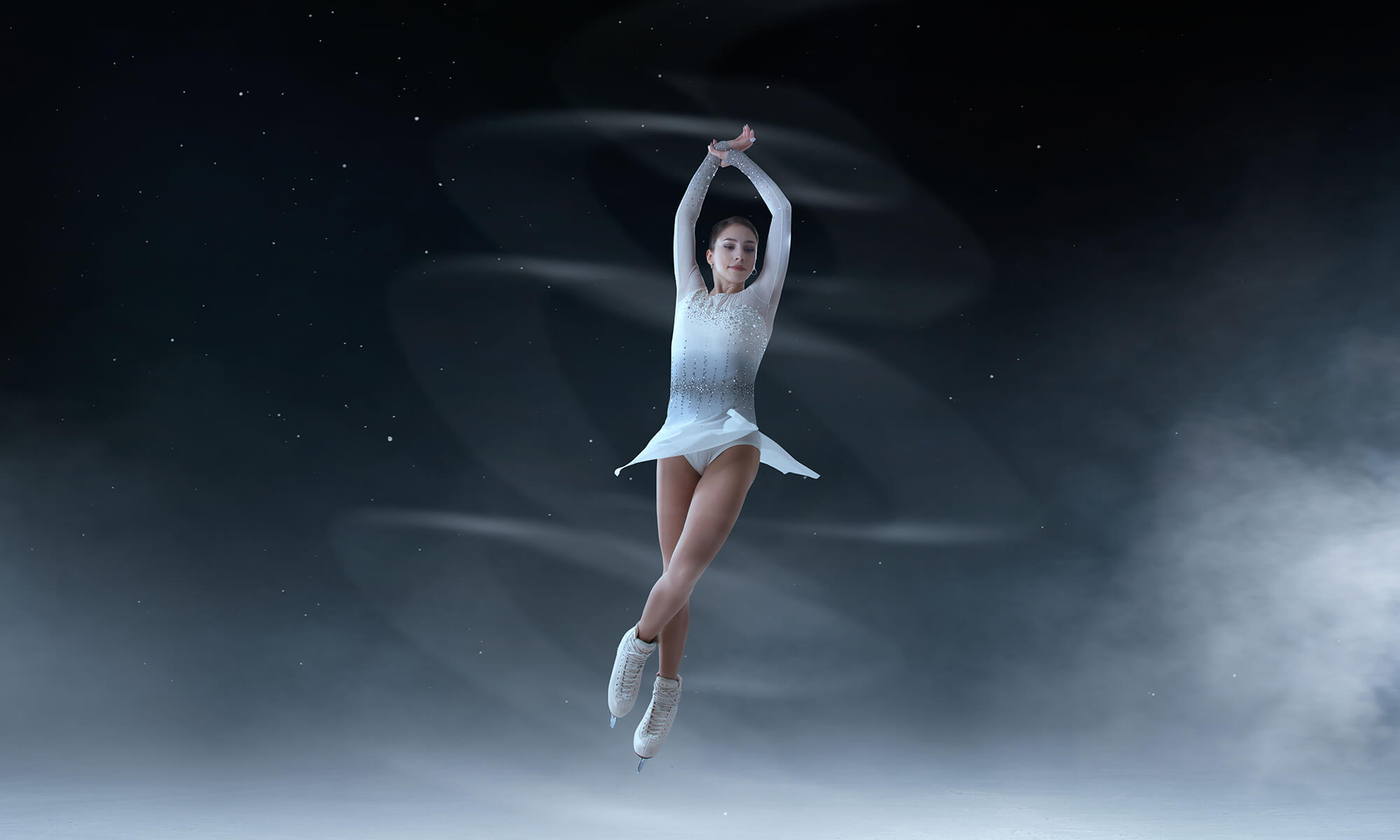
With dazzling performances on the ice skating rink, figure skating is the star of winter sports, and the World Championships and Grand Prix Series, organised by the International Skating Union (ISU) along with the Olympic Games, are the three major world competitions in figure skating.
The spectacular performances that are matched to music are a joy to watch. The fun doubles if you know the different types of jumps. Spins, in which the body rotates at high speed like a spinning top, are beautiful and show the clever application of sports science and mechanics of figure skating.
Figure skating has six jump types
The skate shoe, which integrates the shoe and the steel blade, was invented in Holland. In Holland, as the country's canals freeze over in winter, they become natural ice skating rinks. Canals were used in ancient times as a winter transport system, and it was there that speed skating for speed and figure skating for grace was born and then spread to other countries from around the 17th century.
Steps, jumps and spins are the elements of figure skating, and competitors perform a well-balanced combination of these elements to music of their choice. Due to the high scoring nature of the event, the athletes focus particularly on the jumps, which are officially recognised by the ISU and scored according to their difficulty and number of revolutions in the air.
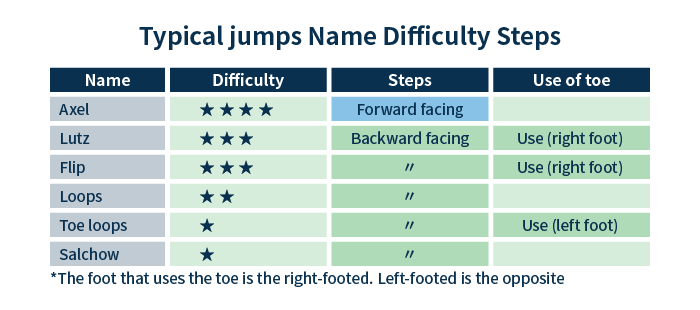
The tip to identifying the type of jump is to first note whether the jump is made from a forward-facing position or backward-facing position. Jumping from a forward-facing position is the most difficult type of jump or axel, because it is jumped from a forward-facing position and landed from a backward-facing position, the double axel is a jump of two and a half revolutions and the triple axel is a jump of three and a half revolutions.
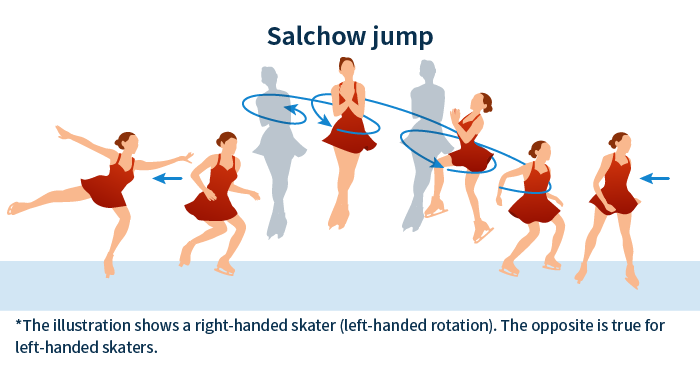
The illustration shows a triple Salchow. Step off from backwards with the edge. Both feet are in the shape of a character ”ha” in Katakana “ハ”.
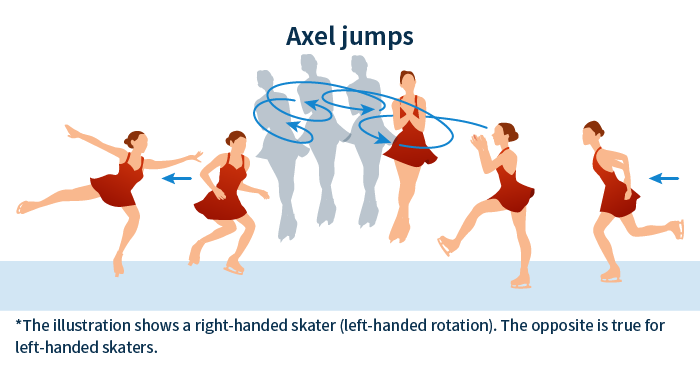
The illustration shows a triple axel. The triple axel is a high jump with three and a half revolutions, as it is a half turn more because it is stepped off from the front. The triple axel is the only jump where the step is taken from the front. The right foot is raised and jumped up as if kicking a football.
Controlling spins using the law of conservation of angular momentum
Along with jumps, what fascinates the fans is the spin, which rotates at high speed like a spinning top. A rigid body, when standing still, it will remain stationary and won’t be able to get started, but in figure skating, it can initiate spins from a stationary position. The spin is obtained by twisting the upper body to create an inverted motion of its reaction in the lower body and swinging both arms wide and horizontally. When starting a spin from a low position with one leg extended, the rotation speed increases as you stand up while contracting the outstretched leg or arm. This is a movement in accordance with the conservation of angular momentum law of mechanics. In a jump rotation, if you look closely, you will see that the arms are contracted immediately after the step-off to speed up the rotation.
Angular momentum is the kinetic energy of a rotating object and is expressed as the product of the moment of inertia and the rotational speed, the angular velocity. The law of conservation of angular momentum states that angular momentum remains constant unless an external force is applied. Therefore, if the outstretched legs and arms are pulled towards the axis of rotation, the moment of inertia is reduced, but the conservation of momentum causes the angular velocity to increase and the rotation speed to increase. When the dancer finishes the performance from a spinning state, the dancer pauses with arms and legs outstretched in order to increase the moment of inertia and reduce the rotation. This is because, unlike ballet on the floor, skating on ice with blades has extremely low friction. The beauty of figure skating is born from the clever application of mechanics and lean body movements.
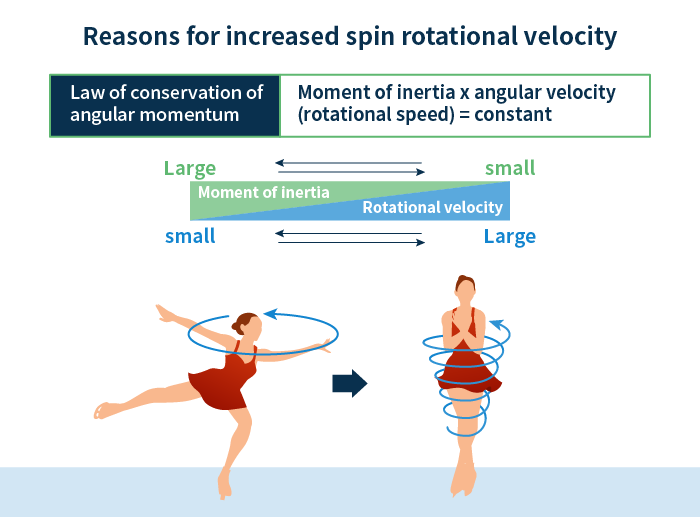
From a lowered position with both hands and one leg extended and the hips lowered, the body is given a twist to start the spin. After that, If the arms are contracted and the legs are crossed, the moment of inertia becomes smaller, but the rotational speed increases due to the law of conservation of angular momentum.
Spintronics and HDD head technology
Electrons rotate at high speeds, similar to a spinning motion, and thus have the property of being microscopic magnets. This is called the electron spin. Magnetisation in magnetic materials is a phenomenon in which the electron spins aligns in the same direction. Modern electronics have progressed to the point where this electron spin is used in various ways. This is known as spintronics, and HDD magnetic head technology is one of the frontiers of this field.
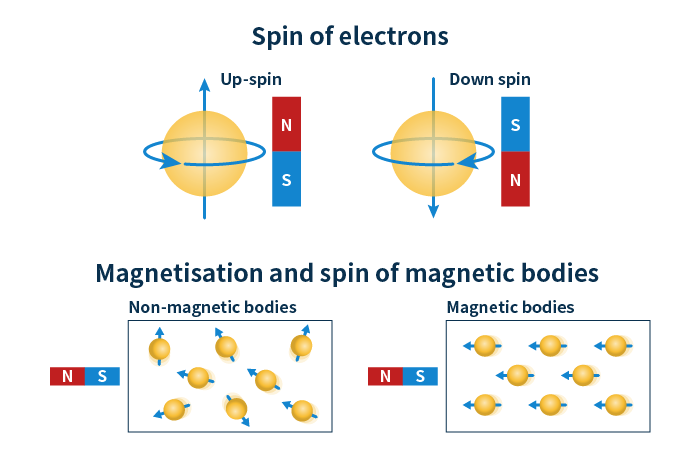
TMR heads have become the mainstream for HDD playback heads, replacing conventional GMR heads. Both are elements with a multi-layer thin-film structure manufactured using thin-film process technology and utilise a phenomenon (giant magnetoresistance effect = GMR effect, tunnel magnetoresistance effect = TMR effect) in which the free layer (free magnetisation layer) shows a large resistance change when the angle of the magnetisation direction changes due to magnetic flux leakage from the magnetic media.
TDK, a world leader in HDD head technology, commercialised the TMR-PMR head combined with a perpendicular recording PMR element in 2005. Due to their large capacity and excellent cost performance, they are widely used in PC storage devices, HDD players and, in recent years, in data centre storage.
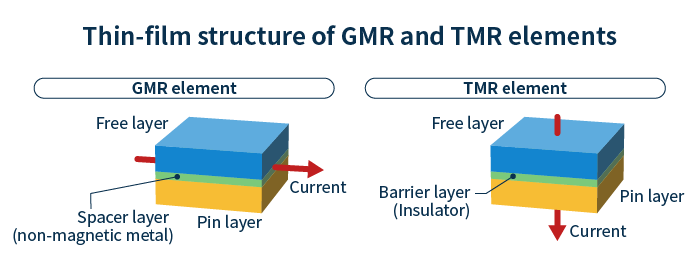
The direction of magnetisation (spin direction) of the pin layer is constant. The direction of the magnetisation of the free layer follows the external magnetic field, which changes the electrical resistance and the current flowing through it.
MAMR heads/HAMR heads for next-generation HDDs
TDK's TMR-PMR heads are also used extensively in near-line HDDs, which play a leading role in data centre storage. TDK is also developing MAMR (microwave-assisted magnetic recording) and HAMR (heat-assisted magnetic recording) heads as next-generation magnetic heads for HDDs that exceed the limitations of TMR-PMR heads. The core technologies and nanotechnologies of TDK are also demonstrating their true value in the world of spin-electronics technology.

TDK is a comprehensive electronic components manufacturer leading the world in magnetic technology



